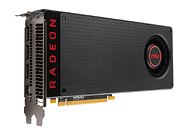Raevenlord
News Editor
- Joined
- Aug 12, 2016
- Messages
- 3,755 (1.18/day)
- Location
- Portugal
| System Name | The Ryzening |
|---|---|
| Processor | AMD Ryzen 9 5900X |
| Motherboard | MSI X570 MAG TOMAHAWK |
| Cooling | Lian Li Galahad 360mm AIO |
| Memory | 32 GB G.Skill Trident Z F4-3733 (4x 8 GB) |
| Video Card(s) | Gigabyte RTX 3070 Ti |
| Storage | Boot: Transcend MTE220S 2TB, Kintson A2000 1TB, Seagate Firewolf Pro 14 TB |
| Display(s) | Acer Nitro VG270UP (1440p 144 Hz IPS) |
| Case | Lian Li O11DX Dynamic White |
| Audio Device(s) | iFi Audio Zen DAC |
| Power Supply | Seasonic Focus+ 750 W |
| Mouse | Cooler Master Masterkeys Lite L |
| Keyboard | Cooler Master Masterkeys Lite L |
| Software | Windows 10 x64 |
The trade war between the US and China has been raging for a while now, and graphics cards are a minimal part of the goods affected. However, these are some of the most sought-after products in the hardware community, and thus deserving of special attention. Added tariffs, however, will either a) be absorbed by companies, or b) be passed on to customers at increased retail pricing. Since companies don't want to reduce their profit margin, and know consumers will buy less product at higher prices, steps are being taken by AIB (Add In Board) partners from both AMD and NVIDIA in moving graphics card manufacturing out of China.
Options being most seriously considered and acted upon stand as Taiwan and Mexico, where the lack of any additional tariff, added to relatively cheap labor, would allow manufacturers to keep operating costs relatively stable - and thus end user pricing. However, while this search for alternate manufacturing locations continues, the tariffs are already being pressed upon graphics cards makers, and it's expected that pricing of graphics cards will be facing increases of 5-10% in the coming months. As if we needed additional price increases in some old (and especially new) product lines...



View at TechPowerUp Main Site
Options being most seriously considered and acted upon stand as Taiwan and Mexico, where the lack of any additional tariff, added to relatively cheap labor, would allow manufacturers to keep operating costs relatively stable - and thus end user pricing. However, while this search for alternate manufacturing locations continues, the tariffs are already being pressed upon graphics cards makers, and it's expected that pricing of graphics cards will be facing increases of 5-10% in the coming months. As if we needed additional price increases in some old (and especially new) product lines...



View at TechPowerUp Main Site






